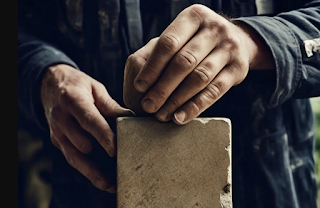Search Blog
Hit enter to search or ESC to close
Trending Now
Parshas Shemos/Vaera - The Birth of a New Religion and the Age of Miracles
- Get link
- X
- Other Apps
Shabbos HaGadol - The Hearts of the Fathers and the Sons
- Get link
- X
- Other Apps
- Get link
- X
- Other Apps
Parshas Terumah begins with a sharp contrast between the building of the Mishkan, the first tabernacle, and the Beit Hamikdash, the Holy Temple. To the Mishkan, donations are solicited from anyone whose heart is moved, while King Solomon relies on draft labor brigades and workers from King Hiram, a foreign monarch, to construct it. And so the First Temple eventually falls and is destroyed.
The Haftorah for the previous parsha, Mishpatim, tells one of the causes. The account in Jeremiah relates how under siege by the Babylonian invaders, the nobles of the kingdom make a covenant to free their Hebrew slaves. Once the siege is lifted however they enslave them once again. The breach of the covenant to free their slaves is one of the causes of the destruction and fall of the kingdom.
Mishpatim begins with the laws of slavery because regulating the rights of even the people at the lowest state, thieves who have been sold into temporary bondage for their crimes, is at the foundation of ethics.
The Mishkan had a special status because its labor was voluntary. The First Temple was built with draft and foreign labor. The Second Temple was built by exiles returning from Babylon, a small number of the passionate 'Zionists' of the era under the leadership of the last of the prophets, built it in shifts, alternating between holding spears and working spades. This period serves as the backdrop for the story of Purim. Then, as now, the Jewish return from exile was contested with the anti-Zionist faction having lobbied Ahasverosh and the Persian Empire to force a halt to the building of the Temple until the triumph of Queen Esther and Mordechai not only saves the Jews from extermination but resumes the rebuilding.
The returning Levites, those old enough to have seen the First Temple as children, weep at how comparatively poor the new temple seems, and yet it becomes the epicenter of a Jewish revival. It is this temple that the Maccabees fight for. The Maccabees however are undermined and destroyed by Antipater, an Arab Roman official, and his son Herod. This foreign Arab dynasty seizes control over Judea.Herod then insists on reconstructing the Second Temple to make it more grandiose and promote the legitimacy of his dynasty of foreign murderous usurpers. In doing so, he effectively destroys it as well. Before the Romans destroy the Temple using brute force, Herod, an arm of Rome, destroys it by tainting it from within.
The first Mishkan has a special status. It was never destroyed and tradition says that it was instead hidden away. The special purity of it has a number of sources, including the role of Moshe and Aaron, the fact that it was the first house of worship, but also one might say that it was built without force or compulsion, from the joyous free will of the Jews, who for all their flaws, poured their hearts into it.
The sacredness of objects can derive from different sources, but as we see in the case of the Mishkan and the Temples, they derive also from how we treat the people involved in their construction.
The Aron, the Ark of the Covenant, that held the Ten Commandments, which were divided into Bein Adam LaMakom and Bein Adam LaChavero, the commandments between man and G-d, and between man and man, relating to how we treat other people, was meant to be gilded with gold on the outside and the inside. This is seen as a reference to a number of homiletical teachings, including that our exterior personalities should match our internal character, but also perhaps that our internal devotion to G-d should also match our external treatment of other people.
You May Also Like
Shabbos HaGadol - The Hearts of the Fathers and the Sons
- Get link
- X
- Other Apps
Parshas Vaera - Bo - Were the Jews Affected by the Plagues?
- Get link
- X
- Other Apps








